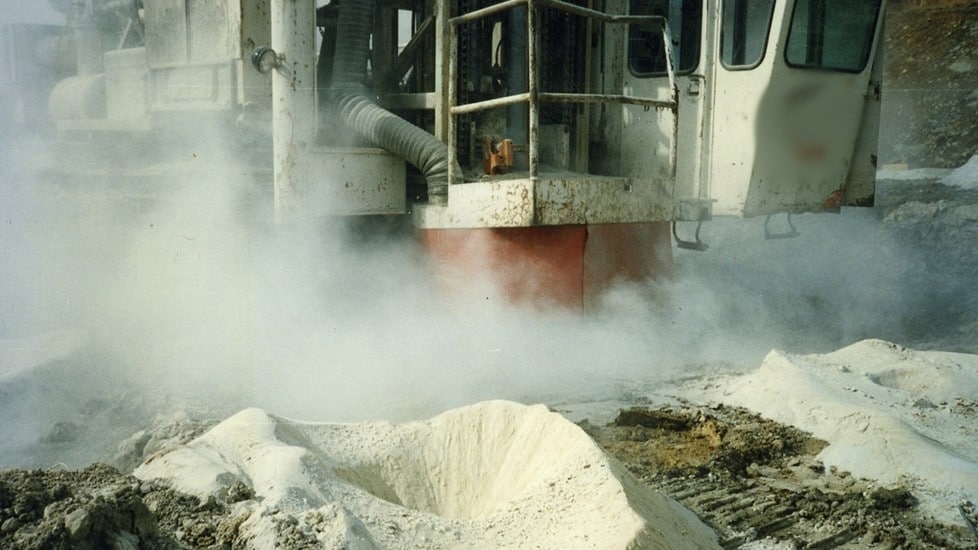Key points
- The Respiratory Health Program’s mission is to provide national and international leadership to prevent work-related respiratory diseases and improve workers’ respiratory health.
- The program generates new knowledge and transfers that knowledge into practice to benefit workers.
Overview

The Respiratory Health Program (RHP) advances NIOSH efforts to prevent work-related illness, improve workers’ respiratory health, and encourage multidisciplinary cooperation and collaboration across NIOSH programs and with external partners. RHP addresses a range of hazardous exposures and related health outcomes in every industrial sector. Adverse work-related health outcomes include lower and upper airways diseases, interstitial lung diseases (e.g., coal workers’ pneumoconiosis, asbestosis, silicosis); respiratory tract and pleural malignancies (e.g., lung cancer, mesothelioma); and new and emerging exposures and related diseases (e.g., engineered stone).
Program priorities
The Program has selected research priorities on the basis of burden, need, and impact and collaborated with other NIOSH research programs to write the research goals in the NIOSH Strategic Plan for FYs 2019-2026. Priority areas include (but are not limited to):
- Preventing fixed airway diseases such as Chronic Obstructive Pulmonary Disease (COPD), obliterative bronchiolitis, and other diseases affecting airways such as hypersensitivity pneumonitis among workers in Agriculture, Forestry, and Fishing.
- Reducing diseases caused by mineral dusts including silica and elongate mineral fibers, and mixed exposures, such as those associated with welding, abrasive blasting and nanomaterials among Construction workers.
- Reducing respiratory disease among Healthcare and Social Assistance workers including work-related asthma caused by a variety of agents associated with lung diseases in dental personnel.
- Reducing respiratory diseases among Manufacturing workers including dust-induced and fixed airway diseases and work-related asthma.
- Reducing diseases caused by mineral dusts including asbestos, coal mining dust, and silica, and those caused by mixed exposures among Mining workers.
- Reducing silica-induced respiratory diseases caused by hydraulic fracturing among Oil and Gas Extraction workers.
- Preventing fixed airway diseases such as COPD caused by dust and smoke inhalation among Public Safety workers.
- Preventing lower and upper airway diseases caused by mixed exposures (including dampness and mold) among Services worker.
What we've accomplished
in 2023-2024, the Program:
- Contributed, In 2023, by The Coal Workers Health Surveillance Program (CWHSP):
- Processing 8,131 chest x-rays, a 50% increase from 2022.
- Reviewed 1,143 spirometry results, a 136% increase from 2022.
- Returning mobile unit to pre-pandemic field work and served 598 active/retired miners in IN, KY, TX, WV.
- Processing 8,131 chest x-rays, a 50% increase from 2022.
- Completed first study of respiratory diseases using Ohio Bureau of Workers' Compensation claims, revealing that Agriculture, Forestry, and Fishing; Public Safety, and Manufacturing had the highest rates of acute cases by industry, and Manufacturing had the highest cases by industry in Ohio workplaces.
- Determined that staff at a hospital were at risk for eye and airway symptoms in association with exposures to sporicidal products hydrogen peroxide, acetic acid, and oxidant mixture at levels below exposure limits, and identified controls to reduce exposures.
- Investigated largest outbreak of fungal disease blastomycosis at a MI paper mill in 2023, identifying hotspots for disease and recommending ways to improve environmental conditions and potentially reduce blastomycosis illness among workers.
What's ahead
In the future, the Program aims to:
- Develop a compendium of vendors associated with engineered stone installation in the United States to better understand the scope of potential workers facing risk for silicosis and other occupational lung disease.
- Evaluate exposures to hospital chemical disinfectants among environmental service workers and assess for associated respiratory symptoms and changes to lung function.
- Evaluate in laboratory tests the chemical and aerosol emissions from thermal spray processes that involve spraying melted product under pressure onto surfaces.
- Measure airborne chemical exposures associated with different types of manicures performed and nail products used in U.S. nail salons.
Resources
NORA Council
The NIOSH Respiratory Health Program helps lead the NORA Respiratory Health Cross-Sector Council, which brings together individuals and organizations to share information, form partnerships, and promote adoption and dissemination of solutions that work. The council seeks to facilitate the most important research, understand the most effective intervention strategies, and learn how to implement those strategies to achieve sustained improvements in workplace practice.
